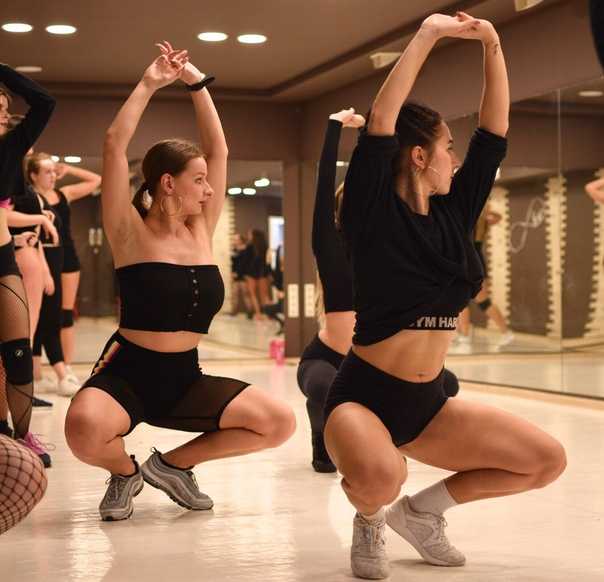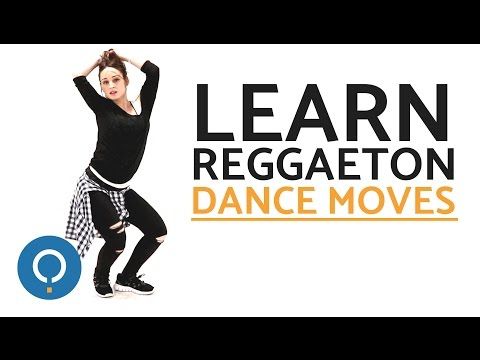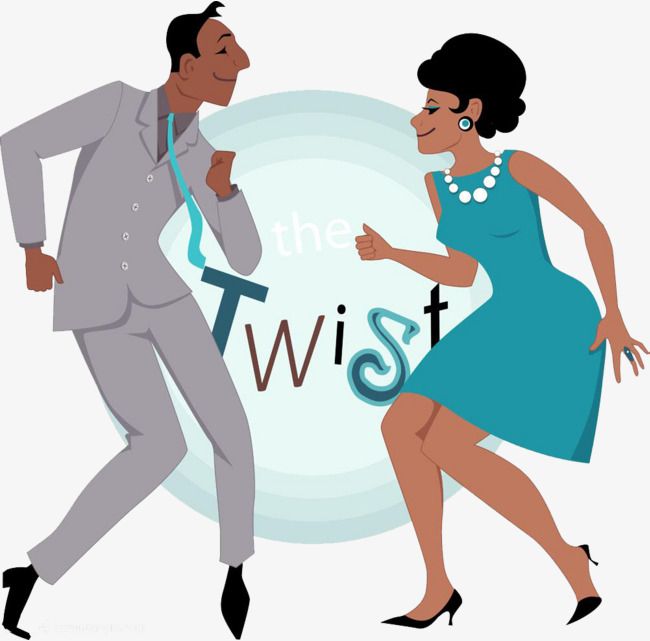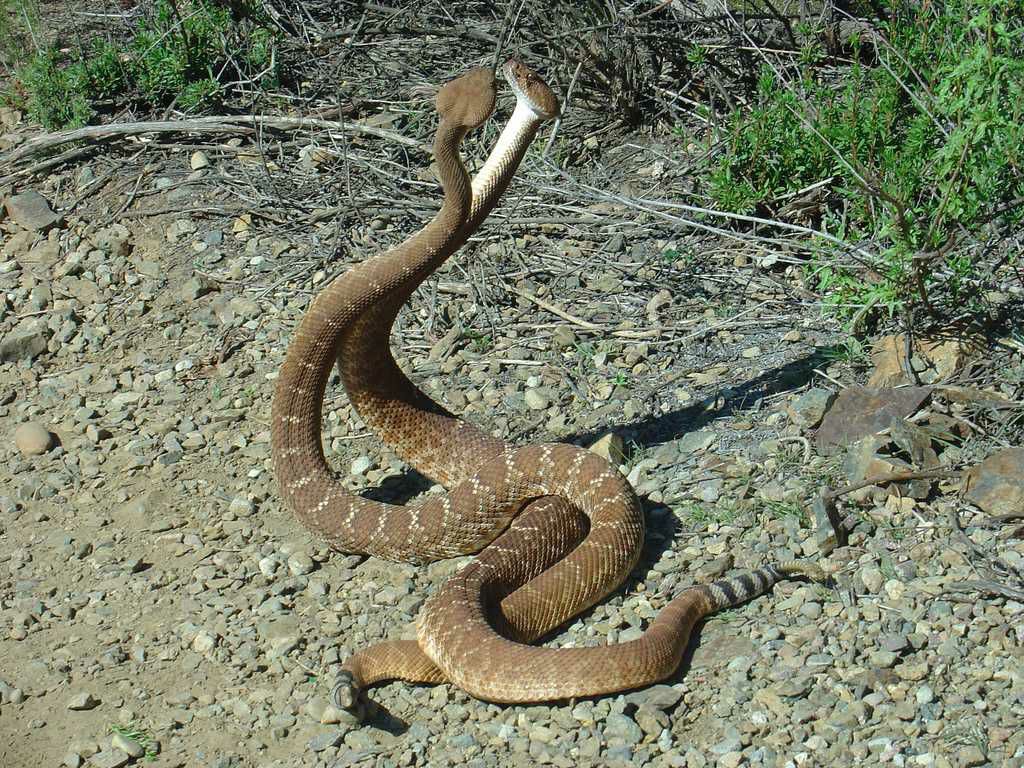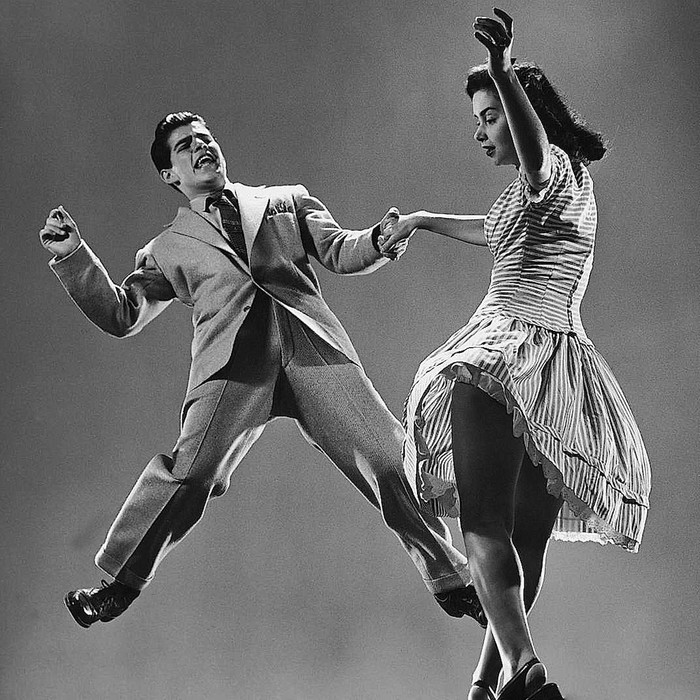How to do pole dancing tricks
Glossary of Pole Dancing Terms
Our glossary of pole dancing terms is ever-growing. Here you will find explanations and eventually pictures and videos to help explain everything you could want to know about pole dancing.
- When our guide says to place your hand on the pole, unless stated otherwise, this generally means having your thumb pointing to the ceiling.
- Placing your arm high on the pole means placing it high and straight but not too high that you are over stretching or lifting off the ground.
- If you find a move hard to do, you can always try it using the other arm as your strongest, until you have built up your strength.
Aerial Invert (Basic Invert from Pole Sit)
Climb the pole to a pole sit. Place your strong, inside hand on the pole in front of you at shoulder height and place your weaker hand across your body and onto the pole above it. Make sure you have a strong grip on the pole with both hands. Take your legs off of the pole and to one side – making sure your inside leg is your strong leg. Use your hand grip to pull up and then tip your body backwards. Stretch your legs up and hook over the pole as you would for a normal invert on the pole. Grip on the pole with your legs and take your hands off.
Angel
Place your strong, inside hand on the pole with your outside, weaker hand on slightly above at shoulder height. Lift your legs up and hook your outside leg over the pole keeping it straight. Bend your inside leg at the knee to create a nice shape.
Ayesha
After doing a basic invert on the pole keep your strong arm where it is and move your weaker arm as low on the pole as you can with out over stretching. Point your fingers towards the pole. When you have a good grip with your hands take your legs away from the pole and keep them straight and in a V position. Try to lean your body away from the pole. This move can be done with a number of different arm positions.
Back Hook Spin
Place your strong hand at the top of the pole and your weaker hand straight across your chest and on to the pole.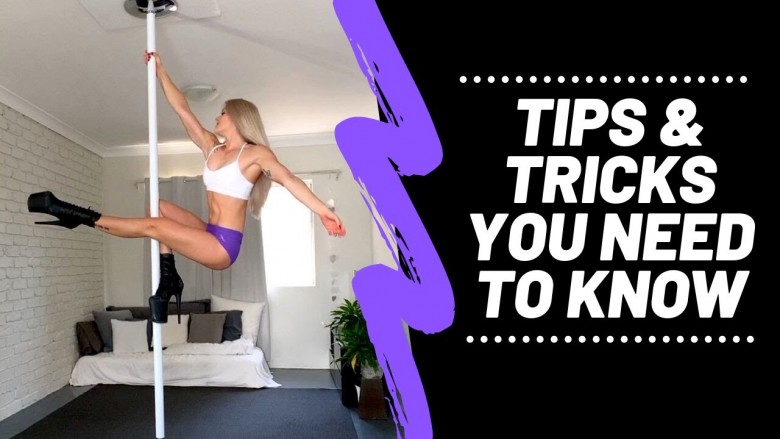 Walk around the pole. Turn your body to face the opposite direction. Swing your now inside leg forwards and then backwards to hook your leg onto the pole at your knee. Use this momentum to spin you round. Bring your outside leg up and bend it at the knee to put your feet together.
Walk around the pole. Turn your body to face the opposite direction. Swing your now inside leg forwards and then backwards to hook your leg onto the pole at your knee. Use this momentum to spin you round. Bring your outside leg up and bend it at the knee to put your feet together.
Ballet Hook Pose
Stand with your strongest side closest to the pole. Lift your inside leg up high and hook your knee over the pole and bend your leg. The bottom half of your inside leg should be horizontal with the floor. Lean the top half of your body away from the pole and pose.
Banana Splits
Go to invert on the pole and hook your stronger, inside leg over the pole at the knee. Allow your weaker leg to drop towards the ground and place this bottom foot on the pole. Straighten your top leg out with your toes pointing towards the ceiling and the pole across the bottom of your foot. Lean the top half of your body towards your bottom knee so that your head will now be upside down. With a good grip with your hands try to straighten your legs out trying to do the splits on the pole.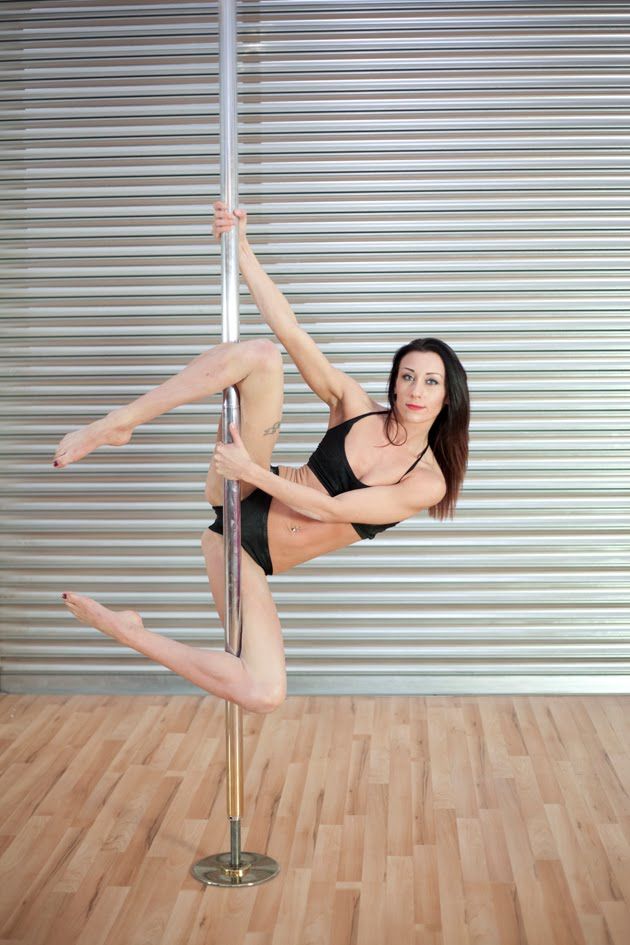 To dismount bend your to knee back over the pole and use your arm grip to take your legs off the pole and dismount.
To dismount bend your to knee back over the pole and use your arm grip to take your legs off the pole and dismount.
Basic Invert
Stand with your strongest arm closest to the pole. Place your strong hand around and on the pole about shoulder height, keeping your arm bent. Place your weaker hand just above this. Your shoulder on your strongest side should be in line with the pole. Swing your outside leg and jump off the ground with your right to go upside down. Pull with your arms. Place your outside foot over the front of the pole and place your inside leg behind it. Grip with your legs.
Bend Over
Stand with your back against the pole with your legs apart. Place your strong arm on the pole just above your bum with your thumb to the ceiling – use this arm to hold yourself to the pole. Keeping your legs straight, bend the top half of your body. Place your weakest hand lightly on the pole between your legs and move it down, as far as you can. When you can’t move any further and your head is far away from the pole, flick your hair up, then bring your body up to standing.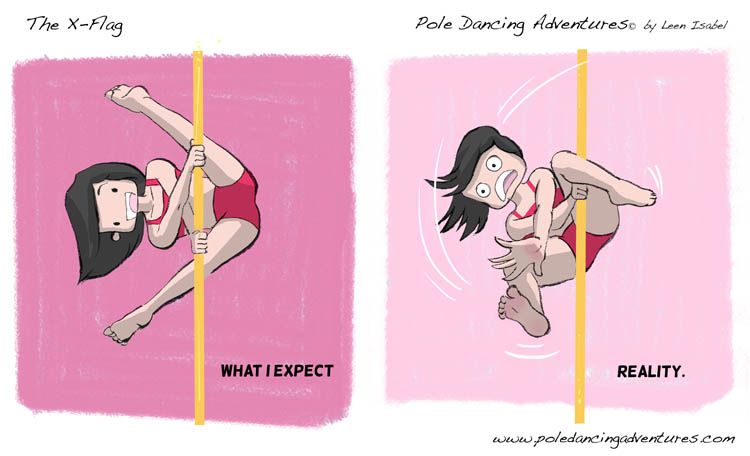 (Only flick your hair when your head is low to avoid hitting yourself on the pole.)
(Only flick your hair when your head is low to avoid hitting yourself on the pole.)
Bow and Arrow
From the pencil pose hook your strong foot over the pole. Put your weaker leg at a 90 degree angle in front of your body. Point your toes. Try to arch your back to create a bow and arrow shape.
Bum Up
Coming to standing pushing your bum up before any other part of your body.
Carousel
Place your strong hand high on the pole and your weaker hand about level with your hips. Walk around the pole. Keep your inside foot on the floor and swing your outside leg out, keeping it low. Bend your leg at the knee keeping it behind your body. Turn your body in to face the pole as you bring your inside leg off the ground. Bend your inside leg behind your body and try to put your feet together. These moves happen in very quick succession.
Carousel Slide to Knees
Face the pole and place you strong hand high on the pole and your weaker hand underneath. Keep you forearms vertically on the pole.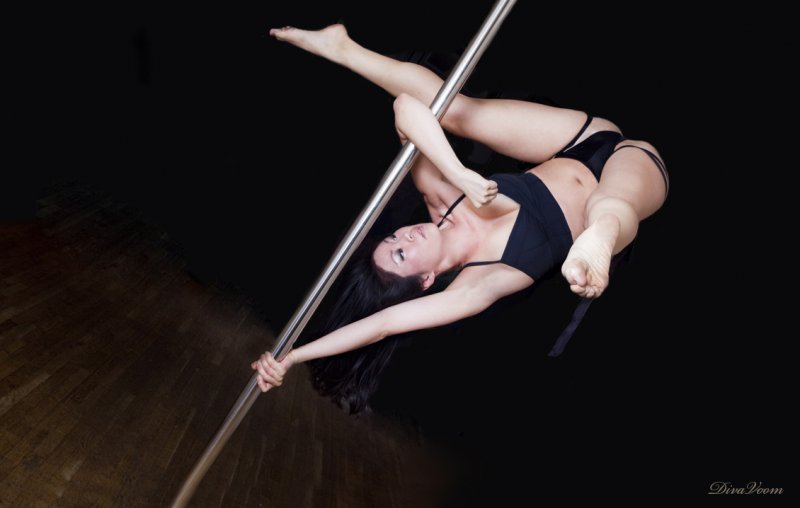 Bring both legs off the ground, bending them at the knees with your feet together and knees apart. Keep your arms strong and bent at the elbow. Keep your body strong and against the pole and loosen your hand grip slightly to allow your body to slide to the floor onto your knees.
Bring both legs off the ground, bending them at the knees with your feet together and knees apart. Keep your arms strong and bent at the elbow. Keep your body strong and against the pole and loosen your hand grip slightly to allow your body to slide to the floor onto your knees.
Chair Spin
Place your strong, inside arm high on the pole and walk around. Place your weakest arm across your chest with your hand on the pole. Kick your outside leg out to your side, keeping it straight and without your leg touching the pole. Bend your knee in front of you. Hop off the ground with your inside leg, bringing it up to meet your outside leg. Both legs should be together, with your knees bent at a 90 degree angle.
Change Direction (using your bum)
Place your strong arm high on the pole and walk around. Place your inside foot on the ground, followed by your outside foot. Push your bum back, then around towards your outside leg. Turn your body to face the other direction as you swap hands.
Cross Leg Release
From a pole sit make sure that you have a very good grip with your legs. Lean back and take your hands off of the pole. Use your inner thigh for grip as well as the crossing of your legs. Keep your weaker leg pointed in a straight line and put your arms out behind your head.
Crucifix
From a basic invert grip very tightly with your legs. When you have a strong grip take your arms of the pole and hold them out to the side.
Cupid
Side climb on the pole. Keep your top leg over the top of the pole bending it at the knee. Place your weaker leg on the pole with your bottom foot on the pole. Hold on to your strong leg at the foot and lean away from the pole to pose.
Cupid (from invert)
As you invert on the pole place your inside stronger leg over the top of the pole bending it at the knee. Place your strong hand higher on the pole than your strong leg. Place your weaker leg on the pole with your bottom foot on the pole. Hold on to your strong leg at the foot and lean away from the pole to pose.
Cycle Legs (from floor)
Lie on your back and lift your legs up. Move both legs in a circle – one after the other as if you are cycling.
Fang
Go into a pole sit and while you are still holding on with your hands straighten both legs keeping them squeezed together, crossing your ankles over. When you have a strong grip with your legs, take your hands off the pole and lean your body back. Keep your legs crossed and straight.
Fireman Spin (Basic)
Place your strongest arm high on the pole and walk around. Place your inside foot on the ground whilst placing your outside arm across your chest and onto the pole. Kick your outside leg out and around the pole, keeping it straight. Place your outside leg on to the pole with your knee bent at a 90 degree angle. Hop off the ground with your other foot and bring it to the pole to mirror your other leg. Your legs should be either side of the pole, with the fleshier part of your thigh on the pole.
Fireman Spin (Extended)
Copy the Fireman Spin.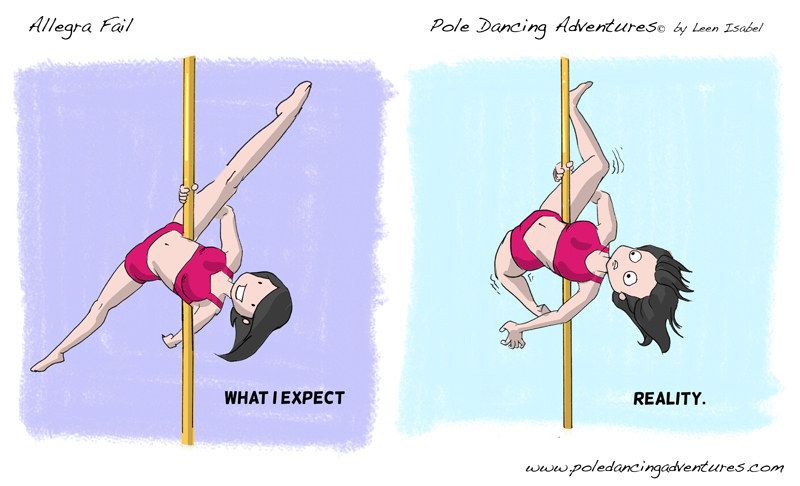 When both legs are on the pole straighten your weakest leg and point your toes.
When both legs are on the pole straighten your weakest leg and point your toes.
Gemini
Place your inside and strong hand on the pole with your inside hand slightly higher at shoulder height. Bring both legs up to invert and hook your inside leg over the front of the pole and bend at the knee. Point your outside leg away from your body. Take both hands off of the pole.
Gemini Plank
Invert on the pole. Bring the top half of your body up so that you are able to place your strong hand low on the pole with your fingers pointing towards the floor. Hold on to the pole by your legs with your weaker hand to help with your grip. (When you have mastered this move you will not need to use this weaker hand) You need to make sure that your strong leg is gripping on to the pole at the inner thigh and top of the foot which needs to be over the other side of the pole. When you have a strong grip with your strong leg take your weaker leg off of the pole and point it out away from your body placing it in a horizontal line. You may need to bring your strong leg down or bend it in order to straighten your other leg. Take your weaker hand off the pole and point it straight out above your head (horizontally) so that your body is in a straight and horizontal line.
You may need to bring your strong leg down or bend it in order to straighten your other leg. Take your weaker hand off the pole and point it straight out above your head (horizontally) so that your body is in a straight and horizontal line.
Golfer
Stand facing the pole about 2 steps away with your feet apart. Place both hands on the pole, one on top of the other. Bend your legs at the knees alternatively, always keep one leg straight and one leg bent as you move your hands down the pole. When your hands are as low as you can get them, pull yourself towards the pole and bend your knees to bring yourself to the ground. (Keep your toes tucked under your feet.) Hold the pole with your strong hand and lean your head and body back. Bring your head and body forward to face the pole. Wiggle your hips. Lift your knees off the ground so that you are on the balls of your feet. Turn your body away from your strong arm and push your bum up to standing.
Head stand
Kneel on the floor facing the pole. Place both hands at the base of the pole. Straighten both legs so that your toes are on the ground, the top of your head is on the ground and the top of your back is lightly touching the pole. Lift your legs off the ground and straighten them so that your body is upside down in a straight line.
Place both hands at the base of the pole. Straighten both legs so that your toes are on the ground, the top of your head is on the ground and the top of your back is lightly touching the pole. Lift your legs off the ground and straighten them so that your body is upside down in a straight line.
Hip Swivels
Place you feet apart, either side of the pole with your strong hand shoulder height on the pole. Bend both knees then bring your body up and through your strong hip. Bend your knees again and take bring your body up through the other hip.
Hook and Arch
Hold loosely onto the pole with your strong hand about shoulder height. Hook your strong leg vertically over the front on the pole. Use this grip to allow you to lean backwards and arch your back to pose.
Inside Arm / Leg / Foot etc
‘Inside’ refers to the side of the body that is closest to the pole.
Inside Hook Spin
Place your strong, inside arm high on the pole and walk around. Place your outside arm across your body and onto the pole at hip height.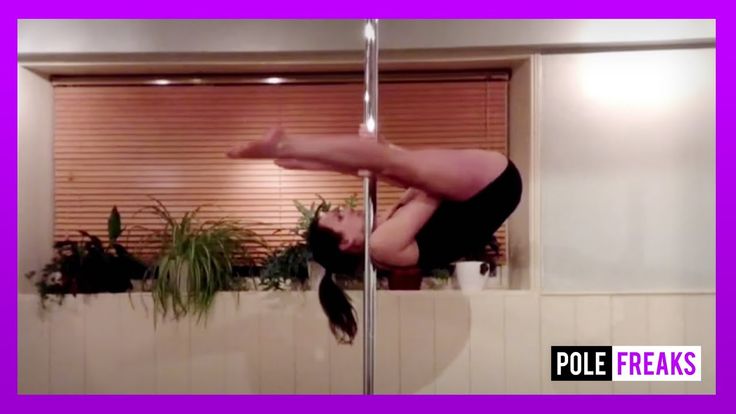 Swing your inside leg up and hook it on to the front of the pole, keeping it relatively low. The pole should be run the length of your calf muscle. Use this momentum and push off the ground lightly with your outside foot, with your body weight slightly forward. Bring your outside leg in to meet your other leg. Towards the end of your spin unhook your legs and place your feet on the ground to land gracefully.
Swing your inside leg up and hook it on to the front of the pole, keeping it relatively low. The pole should be run the length of your calf muscle. Use this momentum and push off the ground lightly with your outside foot, with your body weight slightly forward. Bring your outside leg in to meet your other leg. Towards the end of your spin unhook your legs and place your feet on the ground to land gracefully.
Knees Up
Used to stand from floor work as if from on knees. Holding on to the pole with your strong hand, place your weak foot on the floor and put your weak hand on that knee. Lift up your strong leg to put your foot on the floor, with your knees apart. Place your strong hand on your strong knee to close your legs. Stand up pushing your bum up.
Lean Through
Stand facing the pole about 2 steps away with your feet apart. Place both hands on the pole, one on top of the other. Bend your legs at the knees alternatively, always keep one leg straight and one leg bent as you move your hands down the pole. When your hands are as low as you can get them, flick your hair up and slowly bring yourself up to standing.
When your hands are as low as you can get them, flick your hair up and slowly bring yourself up to standing.
Outside Arm / Leg / Foot etc
‘Outside’ refers to the side of the body that is furthest away from the pole.
Outside Step
Place your strong, inside arm as high on the pole that you comfortably can. Walk around. With your inside foot on the ground, swing your outside leg all the way around the pole. Keep it straight, do not let it touch the pole. When your inside foot feels like it should come off the ground, place your outside foot on the ground to lift your inside foot. From here you can continue into a different move.
Pencil
Face the pole and while keeping your legs straight, bend your body over so that your back is on the pole with your spine either side. Place your hands straight up on the pole roughly at the same height as your bottom. Using your hands for grip, arm strength and abs, lift your legs up so that your body is upside in a straight line.
Pirouette
Place your strong, inside arm as high on the pole that you comfortably can. As you walk around the pole place your inside foot on the ground followed by your outside foot. From here twist your body underneath your inside arm,turning on your outside foot to finish with your back on the pole. Change your hand position from having your thumb facing the ceiling, to having your thumb pointing to the ground. Lift your (formerly) inside leg off the ground and bend at the knee with your foot towards the pole to pose to finish.
Pirouette Pose
Stand with your back on the pole. Place both hands above your head on the pole with your thumbs facing the floor. Lift your strong leg up, bending it up and the knee, with your foot placed on the pole.
Pole Climb
Face the pole. Place your strong arm high on the pole. Place your strong leg vertically on the pole with your ankle crossed behind the pole (the side closet to you) Place your weaker hand on the pole underneath your stronger hand. Using your arms to pull and your strong leg to push away, push off the ground with your weaker leg. Lift your body up. Place your weaker leg on the front of the pole so that your ankles are crossed around the pole. Grip the pole with the lower half of your legs. To continue climbing, repeat this process from the beginning.
Using your arms to pull and your strong leg to push away, push off the ground with your weaker leg. Lift your body up. Place your weaker leg on the front of the pole so that your ankles are crossed around the pole. Grip the pole with the lower half of your legs. To continue climbing, repeat this process from the beginning.
Pole Sit
From a pole climb use your arms to pull your body up and hold your weight. Bend your weakest leg at the knee so that the top of your foot and inner thigh are touching the pole. Place your strong leg over the top of the weaker leg and cross at the knees, gripping with the thighs and foot.
Post Spin
Place your strong hand high on the pole. Walk around the pole. Keep your inside foot on the ground and kick your outside leg out from the pole. Keep it straight and bring it towards the pole as you bring your outside hand onto the pole, placing your hand below your leg. As you spin take your other leg off the ground and between your arms. Place it on the pole with the pole across the back of your thigh. Keep your legs straight so that they are in a V shape.
Place it on the pole with the pole across the back of your thigh. Keep your legs straight so that they are in a V shape.
Reverse Step
This is a backwards step before then continuing forward. For example place your outside foot behind your inside foot and continue walking on your inside foot. Used to untangle your body after a spin.
Shoulder Mount
Stand with your back against the pole with your spine over the pole towards the weaker side of your body so that your spine is not resting on the pole. Place your strong hand above your head on the pole so that your elbow is pointing in front of you. Place your weaker hand above this. Place your body and hips on the side of the pole away from your strong arm. Make sure you look at the ceiling. Swing your outside weaker leg backwards then forwards. When it is forward use this momentum take your legs up towards the ceiling as you jump your stronger leg off the ground. You will need to pull the pole towards you with your hands.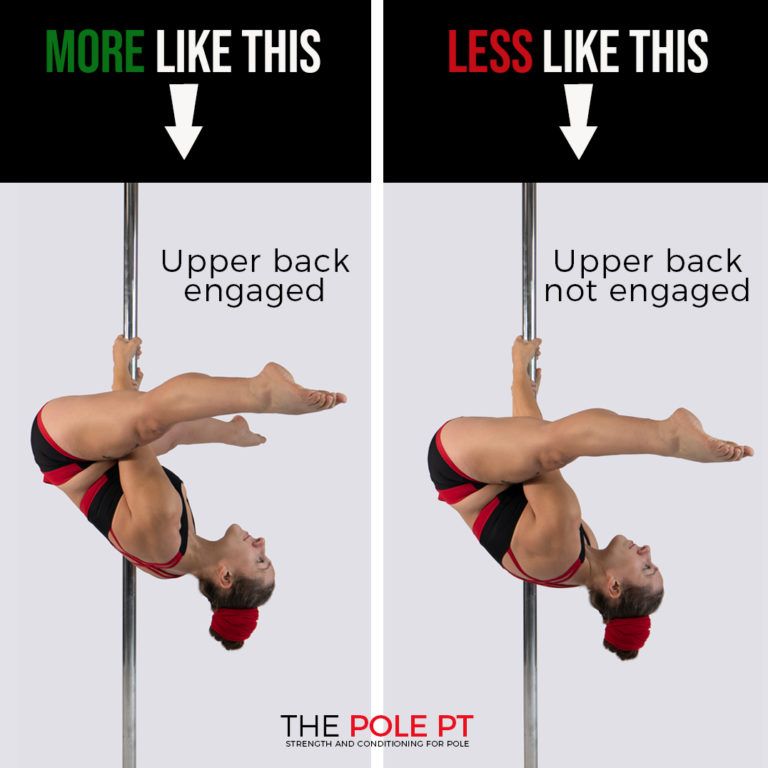 When your legs are getting above your head, hook your weaker leg over the front of the pole and grip on the back with your weaker leg. When you have a good grip take your hands away so you are now inverted.
When your legs are getting above your head, hook your weaker leg over the front of the pole and grip on the back with your weaker leg. When you have a good grip take your hands away so you are now inverted.
Shoulder Roll Dismount
From an invert of the pole, loosen your leg grip and slide your body closer to the floor. When your head is close to the floor lift up your head slightly and allow your strongest shoulder to touch the floor. Use this connection to allow the rest of your body to slowly roll to the floor by loosening your grip on the pole.
Side Climb
Stand with your strong side of your body close to the pole. Place your strong, inside hand on the pole and your weaker hand above it on the pole. Take your inside leg and place it high over the pole, bending your leg at the knee. Using the grip on the back of your leg and your arms, pull your body up and place your weaker leg on the pole gripping with the top of your foot and shin. From here pull your body up.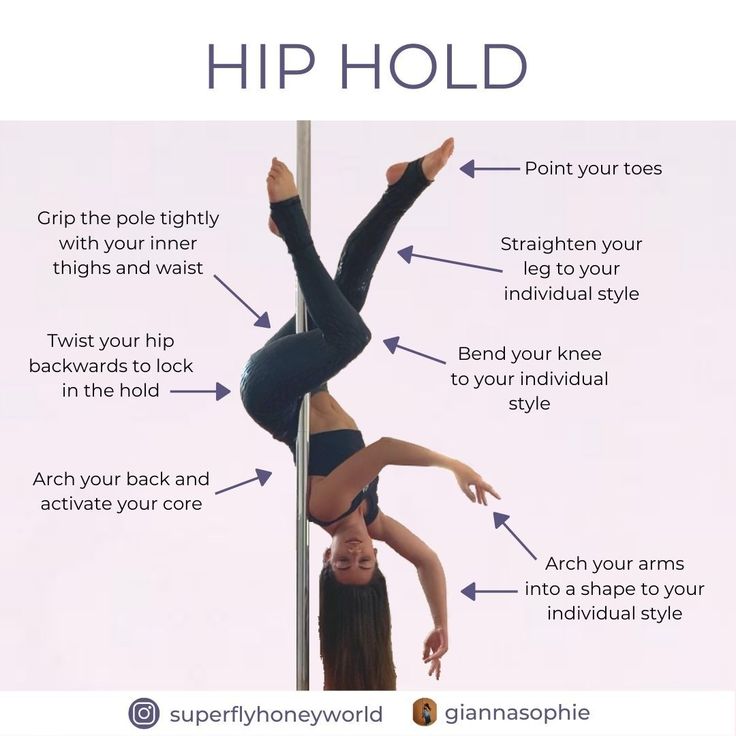 Repeat to climb by placing your inner strong leg over the pole again followed by your other leg. Repeat as necessary.
Repeat to climb by placing your inner strong leg over the pole again followed by your other leg. Repeat as necessary.
Slinky Cat (Floor work)
Begin on your knees. Place both hands on the floor and slide them forward with your head down but keeping your bum in the air. Come on to your forearms and lower you bum to the ground as you lift up your feet. Move your feet away from the pole (if you are using this move to come off the pole) Put your legs back on the ground. Lift your bum up as you push with your hands to push your body back up. Lift your head up last so that you are sitting on your knees again.
Split Grip
One hand is placed high on the pole while the other is placed as low on the pole as you comfortably can.
Split Heel Pose
Stand facing the pole. Place both hands on the pole at shoulder height. Place your bottom foot on the pole with the pole across the bottom of your foot. Using your hands to pull you jump your weaker leg off the ground and place it on the front of the pole with the pole at your ankle.
Split Heel Pose (one-handed)
Go in to the split heel pose as above and take your outside hand off the pole. Straighten your body so that you are not bent over in any way and place your hand out to your side to pose.
Split V
As you invert on the pole place your inside stronger leg over the top of the pole bending it at the knee. Place your strong hand higher on the pole than your strong leg. Push your weaker leg out towards the ground keeping it straight. Straighten your strong leg so that both legs are in a V shape.
Straight Leg Pose
Stand with your strong, inside leg close to the pole. Swing your inside leg up and place it high over the front of the pole with the pole at the bend of your knee. Hold the pole with your strong hand. Keeping your outside leg straight, bend forward stroking your leg with your outside hand. When you are as low as you can go, flick your hair and slowly come upright. Place your strong foot on the ground.
Stripper Spin
Place your strong inside arm high on the pole and walk around. Place your weakest arm across your chest and your hand on the pole. Place your outside foot on the ground and swing your inside leg up and hook it on to the front of the pole, keeping it relatively low on the pole. The pole should be run the length of your calf muscle. Lean your body weight forward and push off the ground with your outside leg. Kick the outside leg out, as far away from the pole as you can, keeping it straight. Bring this leg around to join your inside leg.
Place your weakest arm across your chest and your hand on the pole. Place your outside foot on the ground and swing your inside leg up and hook it on to the front of the pole, keeping it relatively low on the pole. The pole should be run the length of your calf muscle. Lean your body weight forward and push off the ground with your outside leg. Kick the outside leg out, as far away from the pole as you can, keeping it straight. Bring this leg around to join your inside leg.
Strong(est) Arm
This is your strongest arm, usually the arm that you write with or lead with. Moves should be practised using both arms as the strongest arm to build up equal strength on your body.
Thigh Hold
Climb the pole to a stand. Slide your strong leg up the pole, keeping the contact and the grip. Bring your leg up to a 90 degree angle. Slowly straighten your strong leg in front of you, gripping tightly with your thighs. Remove your hands and lean your body back.
V Invert
Place your strong hand on the pole with your weaker hand above it.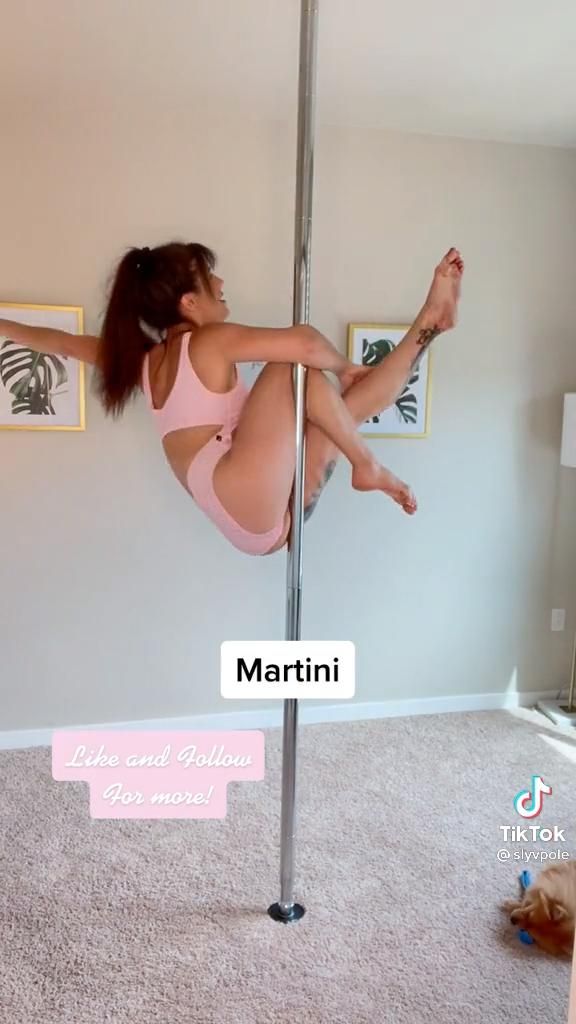 Bring your legs up and when upside down open your legs in to a V shape, keeping them straight with pointed toes.
Bring your legs up and when upside down open your legs in to a V shape, keeping them straight with pointed toes.
Walk Around
Place your strong hand high on the pole, keeping it straight. Lean your body out slightly and walk around the pole.
Wiggle and Flash to stand
With your back against the pole have your strong hand on the pole behind your head with your thumb pointing to the floor. Use this hold your body to the pole. Wiggle your hips up and down as you move you body to the ground. When you knees are bent place your weakest hand on the corresponding knee, using it to open both legs as if to flash. Close your legs. Turn your body to the side of your strongest arm (eg. right if you are right-handed) Change your hand to have your thumb pointing up, put your outside hand on that knee and push up to standing, with your bum first.
Wiggle Hips
Stand with your feet hip width apart facing the pole with your strong hand loosely holding the pole about shoulder height.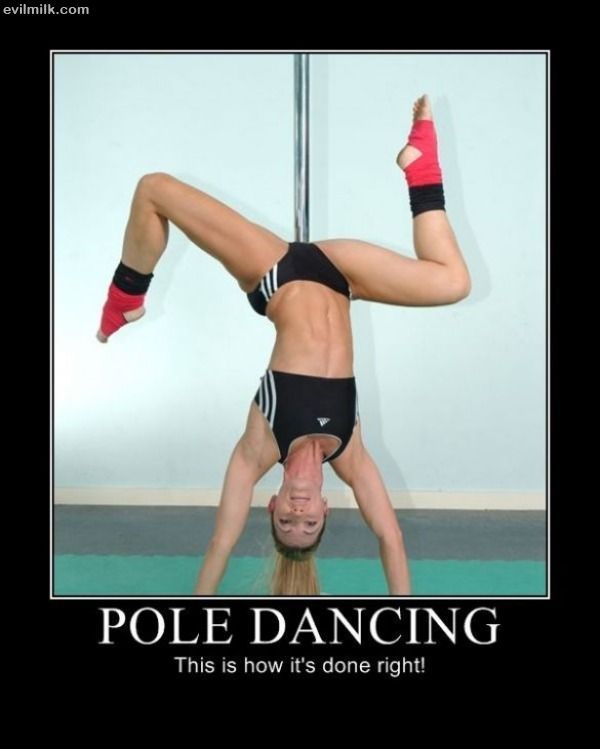 Bend your knees and bring your hips up to the right hand side. Bend your knees again and bring your hips up on the left hand side. Repeat as needed.
Bend your knees and bring your hips up to the right hand side. Bend your knees again and bring your hips up on the left hand side. Repeat as needed.
Wiggle Hips (Figure of Eight)
Stand with your feet hip width apart facing the pole with your strong hand loosely holding the pole about shoulder height. Move your hips slowly in a figure of eight movement; Move your hips in a clockwise circle to the right and then an anti-clockwise circle to the left.
Do you want to add a term to the glossary? Do you have a pole dancing term that you need to be explained? Just contact us and we can do just that.
8 Flexibility Tricks Pole Dancers Strive For — Hair Flicks & Tricks
Solo6min read
Written By Briana Bendelle
Pole dancers are well-known for their stunning display of splits on the pole. As well as any other surface we deem split-able while on holidays or at 1am after a night out with the gals! To be honest, I don’t blame us.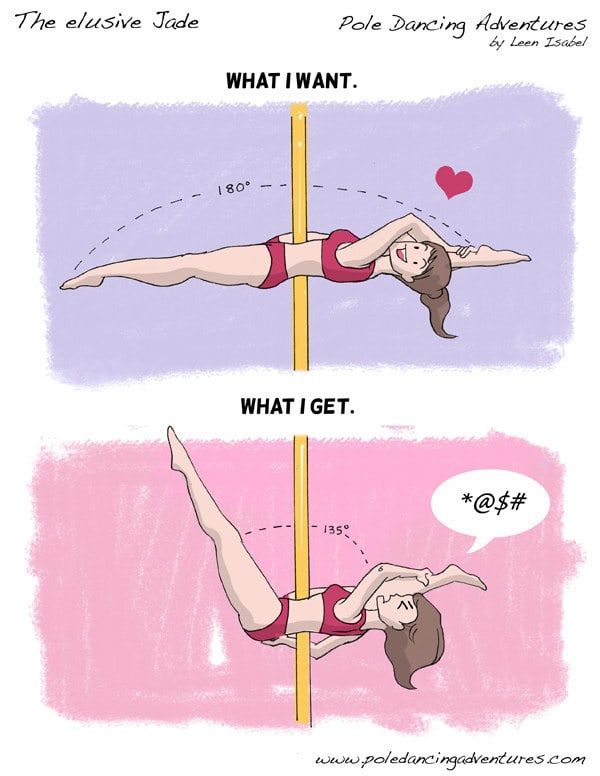 We work super hard for our flexibility, which takes commitment, consistency and above all things – perseverance. So show-off those splits baby g!
We work super hard for our flexibility, which takes commitment, consistency and above all things – perseverance. So show-off those splits baby g!
For many pole dancers, the journey starts when a new trick is introduced in class and it requires some level of leg or back flexibility. Some of these tricks (in intermediate or early advanced pole levels) are still achievable without crazy amounts of flexibility. Although just like Jack and the Beanstalk, once we discover the magical beans that are flexy pole tricks, we become obsessed with climbing the beanstalk of flexibility goals!
So let’s jump into 8 Flexibility tricks most pole dancers dream of unlocking throughout their pole dancing journey. Perhaps some of these have already been ticked off your list!
Jade Split (and progressing to Deville Split)
No matter how advanced you become in pole, there will ALWAYS be this timeless classic – the Jade Split.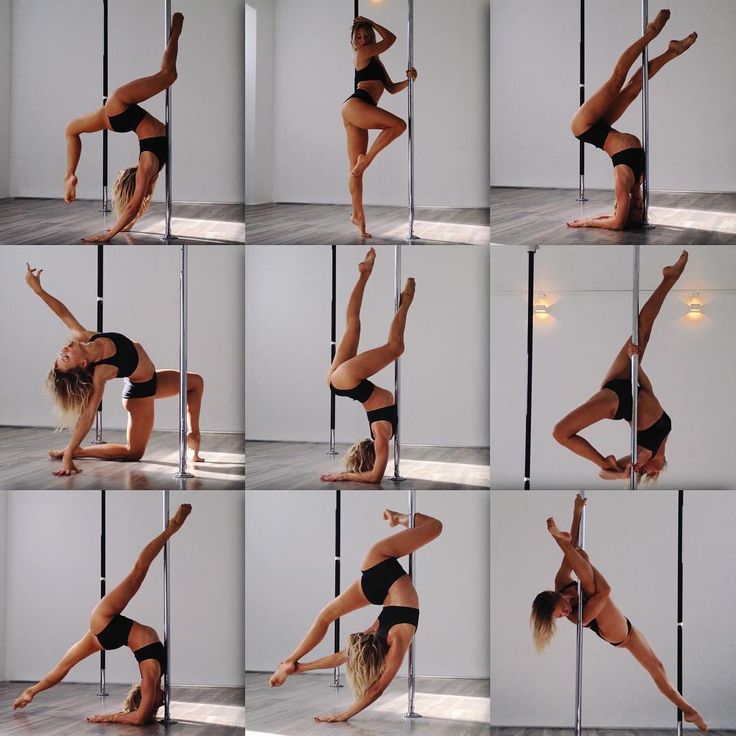 When perfectly executed, legend has it that pole muggles reach orgasmic levels of excitement while witnessing this trick.
When perfectly executed, legend has it that pole muggles reach orgasmic levels of excitement while witnessing this trick.
The Jade Split is usually one of the first flexy tricks a pole dancer is taught and where the obsession for a flat split-line begins. The majority of pole dancers can get into this trick, but without that little thing called active flexibility, we wonder why our shape is more of a “V” rather than a horizontal line.
Once we achieve the Jade Split, it can be advanced to another famous trick known as the Deville Split. Essentially, the Deville Split is a Jade Split without the hand on the hip (as this hand assists through engaging an armpit grip or “chicken wing”). With the Deville Split, you lock that inner thigh and hip grip into the pole by using both or one hand to pull the leg ‘across’ the pole and actively split on the pole. Without the added "chicken wing” it can be much more difficult! Again, the Deville Split looks absolutely stunning when executed as a perfect, horizontal split-line or in an over-split.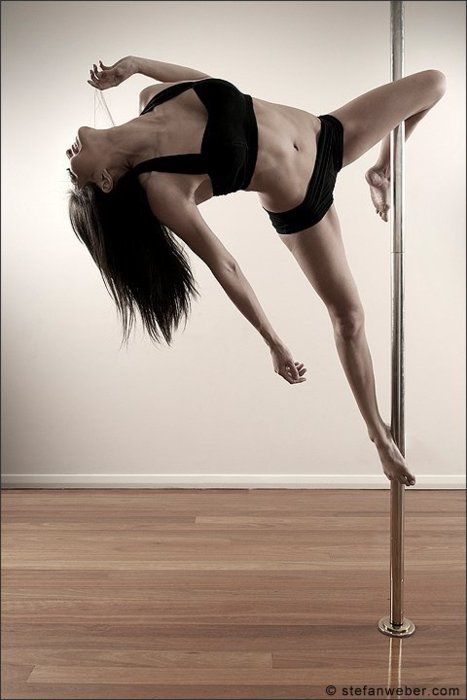
Have you seen Chilli Rox’s Jade Split?! Photo by Coco Film & Photography taken at Pole Class, Sydney
2. Allegra (advancing to Jallegra and Closed Allegra)
The Allegra Split usually pops up in advanced pole levels, as it requires decent hamstring flexibility to hold the trick. It is a deep thigh grip and again, will have you pursuing a beautiful split line in order to whip out the perfect Allegra.
Just when you thought you had achieved godly Allegra status, you realise this trick unleashes a whole new world (minus the magic carpet and Aladdin). You can start to play with different variations, which usually requires back and shoulder flexibility on top of those hardworking splits. The Closed Allegra is when you use your outside hand to grab the free-floating foot, behind the pole. Once you grab that foot (or your pole heel!) you will soon embark on a quest to get this shape even nicer, adding more fuel to flame your flexy obsession.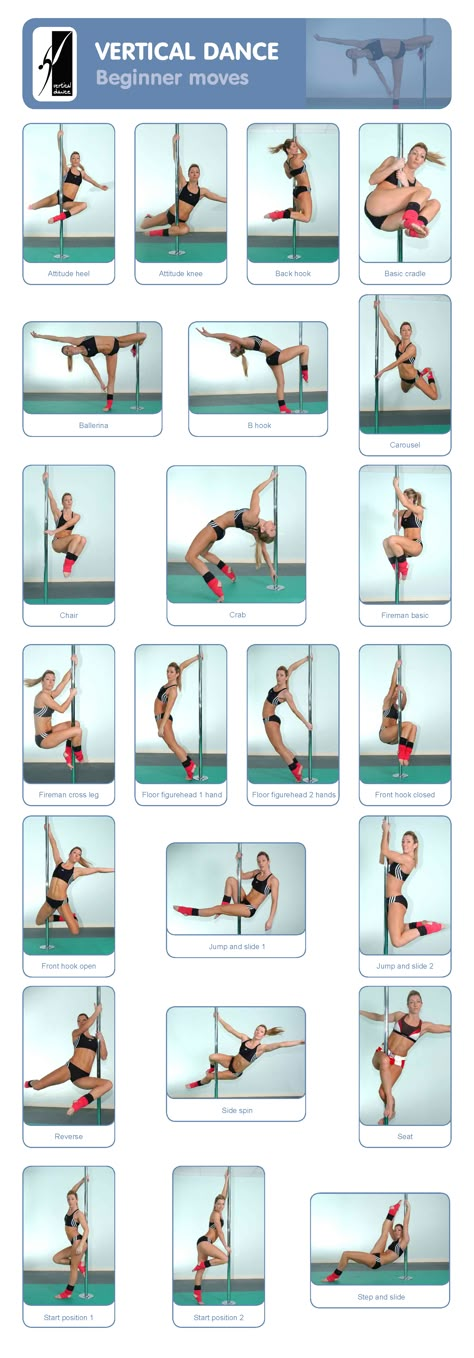
Also, let’s not forget the evil cousin to the Allegra family – the Jallegra. Now this bitch got some sass! The Jallegra doesn’t care for ribs, or kidneys, or hips, or shoulders for that matter. She will have you tapping into your thoracic rotation and shoulder mobility, while also demanding attentive active splits and engagement. But just like the Closed Allegra, once you nail the Jallegra, you have some spectacular splits in your bag of pole tricks, that will ALWAYS get a squeal of delight from your audience!
3. Plus Sign
An oldie, but a goody! The Plus Sign like the Jade Split, is one from the early days of pole dancing but is timeless and always great to see when performed well. The Plus Sign does ask for some strong hamstrings and adductors though, so be ready to train those middle splits boo! You will also be rotating through your back and it is recommended to practice this baby on both sides so not to overload one hamstring, or injure your back through repetitive one-sided twisting.
The Plus Sign can be performed on a static pole, but looks exceptional on a spin pole. Depending on your level of flexibility you might have the soles of your feet on the pole or position the pole behind your ankle on the Achilles area. The armpit grip is essential but again, some pole dancers also hold the pole with their hand or if advanced, will release the hand. Some polers even grab the top ankle with their outside hand to free it from the pole. Oooooh stop it!! So many variations for such a cool flexy move, and definitely one to work towards!
Photo of Andrea Ryff taken by Don Curry Photography at Achieve Pole Studio Sydney
4. Russian Split (AKA Oona Split)
We’re starting to drift into advanced territory now friends! The Russian Split reared its bendy head when pole “sport/fitness” took off, as the trick seems to have quite a gymnast vibe about it! The Russian Split is most commonly performed barefoot although there are some exceptional dancers, who can perform this trick in heels!
The Russian Split positioning and grip is achievable for most advanced level pole dancers, however the degree of the split-line will depend on if you have a flat split or over-split. The Russian Split needs strength through the hamstrings and quads to actively engage these muscles mid-trick, as well as the biceps and shoulders so that you have a steady “push-pull” balance.
The Russian Split needs strength through the hamstrings and quads to actively engage these muscles mid-trick, as well as the biceps and shoulders so that you have a steady “push-pull” balance.
While there are variations of the angle of the hips and the ways to hold the pole in this trick, no matter the variation, a Russian Split is like the fairy godmother of pole splits and will take any pole combo from pumpkin to pole-tastic!
Image by Pole Dancing Adventures
5. Bird of Paradise (and Upright Bird)
Okay so now we are well and truly in advanced/elite pole territory, as we take flight with a Bird of Paradise (or affectionately known as “The Bird”). For many pole dancers, the Bird of Paradise does evoke the need to “flip the bird” at this particular pole trick, as it can be a difficult little nugget to crack.
The Bird of Paradise requires advanced levels of active split flexibility, shoulder and hip flexibility, with half the battle being the entry into this trick.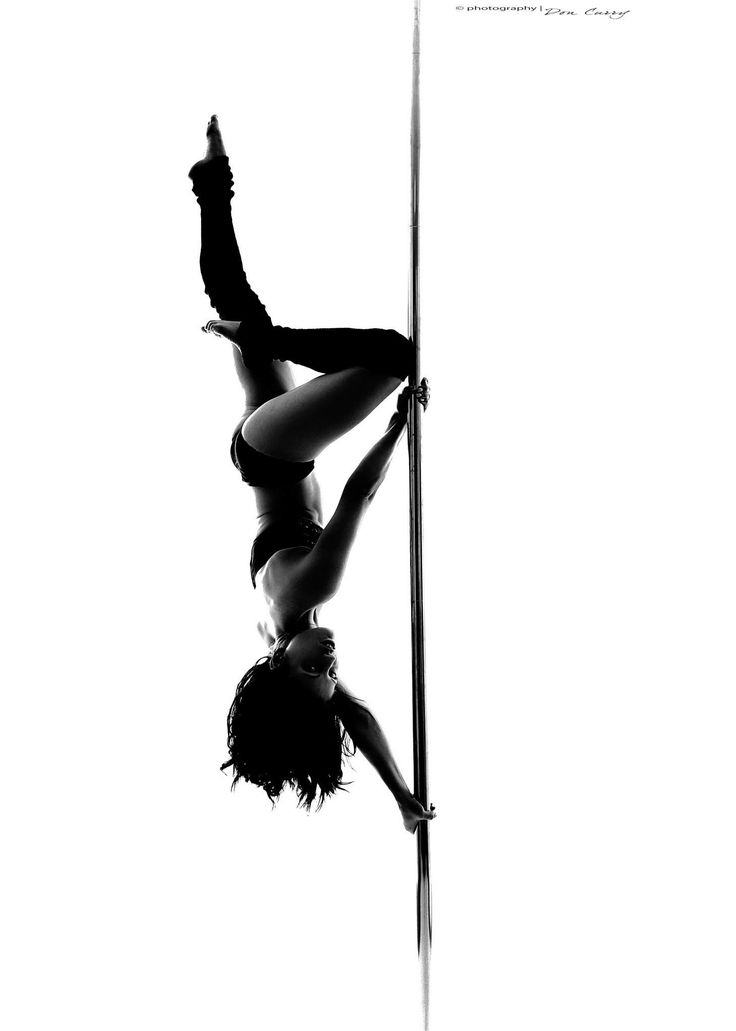 However, the gasps of the audience will be the buzz you need as you unravel on spin pole into this absolutely stunning pole split!
However, the gasps of the audience will be the buzz you need as you unravel on spin pole into this absolutely stunning pole split!
The Bird can also be performed upright, which again requires high degrees of flexibility but is always a delight to witness when placed mid pole combo. While it might seem like taking the slow road to achieve the Bird of Paradise, those hours, months and years of practice will be so worth it, just to have The Bird join your pole splits squad!
Photo by Jealous by Nature
6. Rainbow Marchenko
Is it a Bird? Is it a Jade? No, it’s a Rainbow Marchenko! But anyone who can execute a perfect Rainbow is a bloody super hero in my eyes and could give Superman a run for his money! It’s not quite clear what was going through the mind of Elisabeth Marchenko when she came up with this pole trick, but the pump-up song used to give it a whirl must have been good!
Photo of Anastasia Skukhtorova
The Rainbow Marchenko has since been seen throughout the professional pole world performed by icons such as Anastasia Skukhtorova, Marion Crampe and Amy Hazel.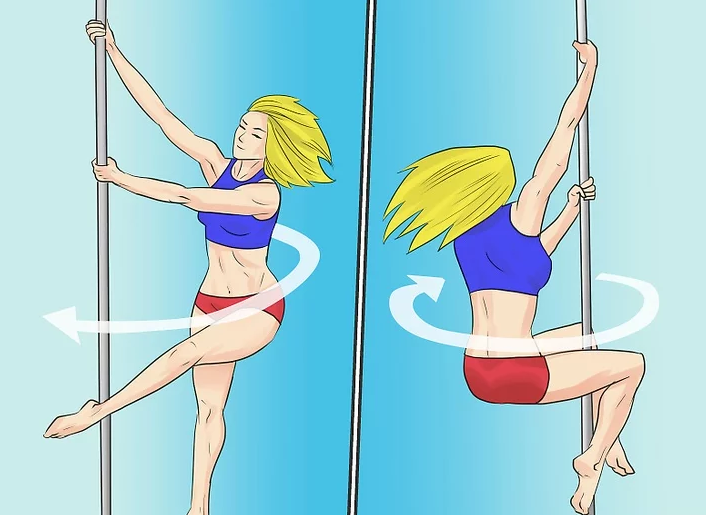 A Rainbow requires extremely advanced flexibility through the back and shoulders, not to mention stunning and strong splits. If you ever feel the need to wear your leg as a hat, give this trick a go! Unless you are a child who is yet to grow bones and creaky hips, the Rainbow Marchenko can takes years of dedication and practice to achieve.
A Rainbow requires extremely advanced flexibility through the back and shoulders, not to mention stunning and strong splits. If you ever feel the need to wear your leg as a hat, give this trick a go! Unless you are a child who is yet to grow bones and creaky hips, the Rainbow Marchenko can takes years of dedication and practice to achieve.
Let’s all just take a minute to appreciate how hard these pole dancers work to unlock such an incredible pole split.... Okay now go book into a stretch class!
Image by Mona’s Comics
And now for our final 2 flexy pole trick milestones which will forever categorise you in the area of elite “Felix-ibility”...
7. Spatchcock
The Spatchcock (AKA the “Spatchie”) can be found in the advanced/elite levels of spin pole class. A difficult move due to the strength, control and active flexibility required to attempt it. Created by the dame of flexibility and pole dancing, Felix Cane, the Spatchcock can take many months and years of conditioning and stretching before you are ready to give it a go.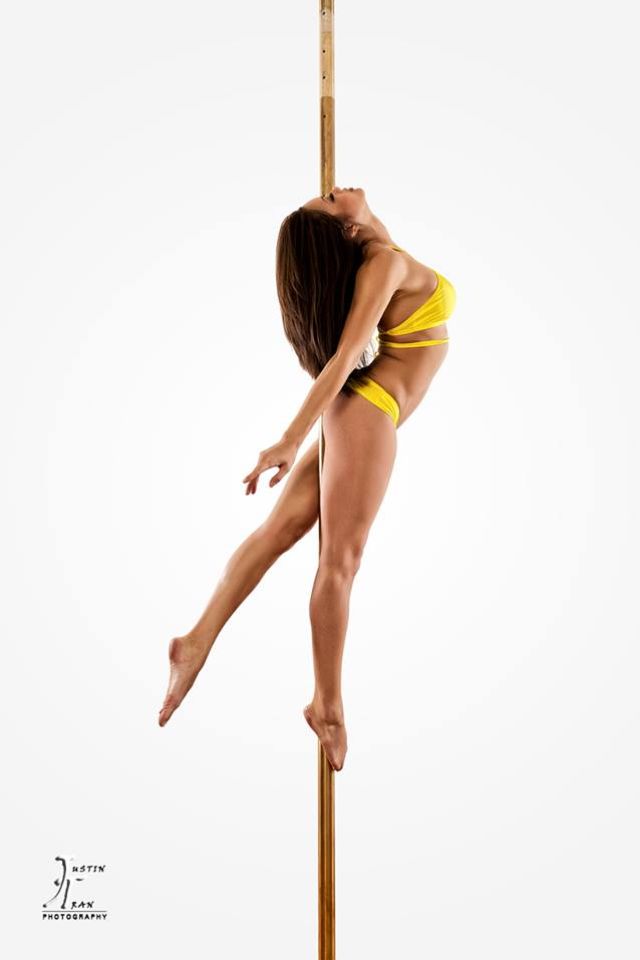
The Spatchie demands flat pancake splits, thoracic and lumbar spine extension and a great big smile so you remember to breath in this trick! While many pole dancers (still very impressively) position the pole just below the shoulder blades/behind the armpits, a true Spatchie is achieved when the pole is positioned across the lower back. Such a range of motion won’t be available for everyone, so make sure you find a create stretch coach and get ready to buckle up for the long road that is conditioning and practice!
If the Spatchcock is on your list of flexy pole goals, be sure to read The Pole Physio’s Spatchcock blog series so you can train smart and safe!
Photo of Felix Cane taken by Vertigo Photography
8. Eagle (and Inverted Eagle)
Finally, what would a list of flexy pole goals be without Felix Cane’s other pole baby, the Eagle. Many pole dancers usually train an Inverted Eagle (upside down) before progressing to an upright version.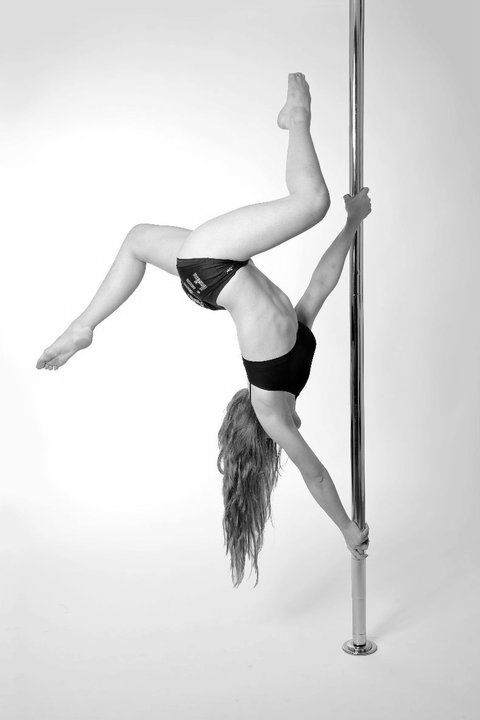 The Inverted Eagle takes advantage of gravity as you try to bring the foot overhead, with the other leg hooked onto the pole. For many polers, this position feels a bit more natural and resistance bands can be used to assist with training, before flipping the shape upright.
The Inverted Eagle takes advantage of gravity as you try to bring the foot overhead, with the other leg hooked onto the pole. For many polers, this position feels a bit more natural and resistance bands can be used to assist with training, before flipping the shape upright.
From there, it’s time to spread your wing and Eagle! The Eagle requires huge amounts of back and shoulder flexibility, as well as great hip extension and an oversplit for the perfect execution. The bottom leg can stay hooked around the pole, or if you would like to achieve Felix-like greatness, the leg can straighten and one hand is released.
Just like mum jeans and a little black dress, the Eagle is an absolute pole classic and will never go out of style!
Photo of Felix Cane at MPDA taken by Vertigo Photography
Honourable mention: Forward Splits, Middle Splits, Pancakes and Back Bends
Of course, without our trusty splits and back bends, many of our flexy pole goals would not be possible! A flat split or gorgeous back bend or bridge can take just as much time, patience and dedication as a pole trick, so if you are working on these things – you go Glen Coco! Not only will you one day be able to work towards your flexy goals ON the pole, but you will have some pretty epic poses to whip out for your summer vacation photos! Keep bending boo!
Whether you are a beginner working on a flat split, or an elite pole dancer attempting the flexy “birds”, make sure you take the time to properly condition your body and listen to it when it needs a rest.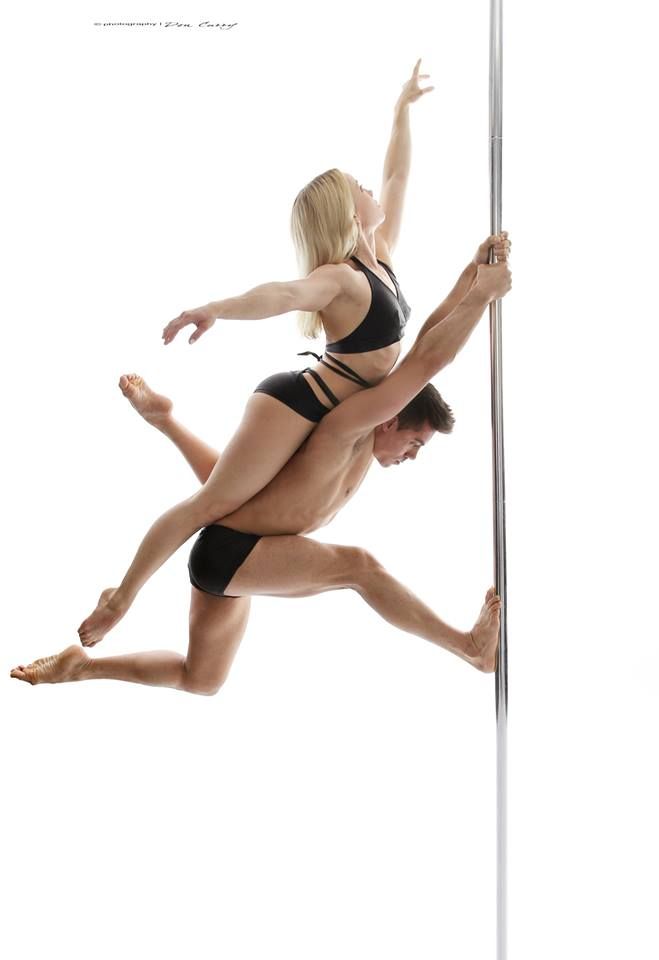 For many flexy tricks, respecting the journey is key to achieving the move. Train smart so that you can add yet another bird to the flexy bundle – the Excited Pigeon (she comes out through the squawking you do as you smash your flexy goals!) Find yourself a great flexibility coach, stay focused and set yourself mini-goals along the way. Before you know it, you will be well and truly on the road to pole Felix-ibility!
For many flexy tricks, respecting the journey is key to achieving the move. Train smart so that you can add yet another bird to the flexy bundle – the Excited Pigeon (she comes out through the squawking you do as you smash your flexy goals!) Find yourself a great flexibility coach, stay focused and set yourself mini-goals along the way. Before you know it, you will be well and truly on the road to pole Felix-ibility!
What flexy pole milestones are on your to-do list and why? Comment in the box below and share your flexy pole goals!
Photo of Mischka taken by Vertigo Photography
pole dancepole dancing trickspole flexibilitybeginner pole dancingpole dancing classpole splitshair flicks and trickspole dance studiopole blog
Briana Bendelle
Briana has been pole dancing since 2012, where it was love at first body roll! She has been a student, teacher and studio manager over the years, and is happiest when she is hair flicking it out onstage.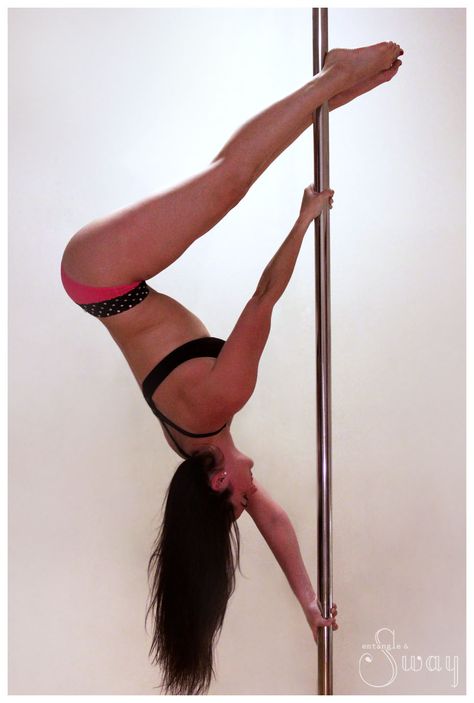 Along with a good pair of booty shorts, Briana loves sharing stories and telling anyone who will listen about the glittering pole community!
Along with a good pair of booty shorts, Briana loves sharing stories and telling anyone who will listen about the glittering pole community!
What you need to know about tricks in Pole Dance?
Pole Dance, or pole dancing, is a sports direction at the intersection of choreography and acrobatics. Dance moves are mixed with acrobatic tricks on a pole, which creates a really interesting effect. For the performer, this is an opportunity to prove himself in several styles at once, pump up muscles, develop endurance, flexibility, plasticity and not get bored in training, and for the audience - a bright and spectacular show that is interesting to watch. Given the almost complete absence of age restrictions and the variety of the program, it turns out to be an ideal direction for those who do not want to choose between dancing, stretching, tricks and power loads.
Trick component of pole dancing
Acrobatic elements are the basis of Pole Dance, which is present in any direction.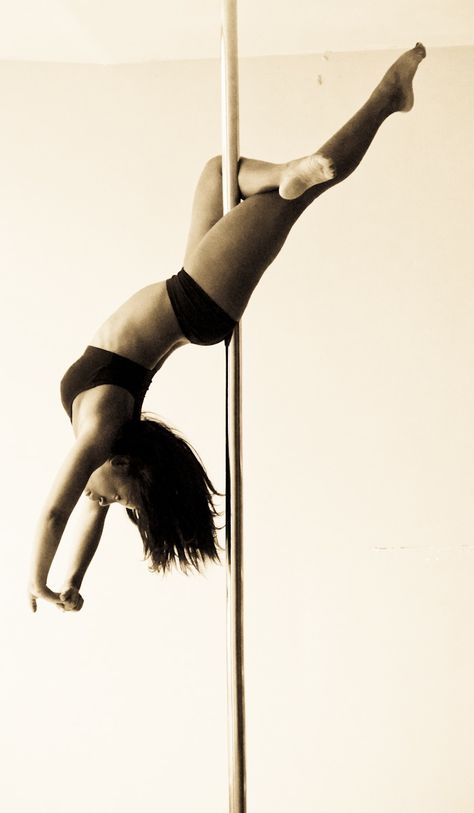 If you remove the trick part, only dances will remain, and this is a completely different style.
If you remove the trick part, only dances will remain, and this is a completely different style.
Tricks performed in the air or from the floor, including a variety of twists, hangs, splits, flips, lifts with an emphasis on flexibility or strength. They are interconnected in successive bundles and combined with choreography at the pylon or in the stalls. Everything is performed to the music, without specific sequence requirements. This is the advantage of classes - there are no clear rules for connecting elements, and the links are built depending on the level and preferences of the dancer himself.
Acrobatic elements are divided into several levels of difficulty (from beginners to professionals) and mastered gradually. More complex exercises are based on basic ones. Everything is worked out under the constant supervision of a coach, this helps to avoid injury.
Differences of tricks depending on the direction
Depending on the ratio of the choreographic and trick part, pole dance is divided into several directions:
- Exsotic Pole - about 70% to 30% in favor of dancing;
- Pole Art - balanced 50% to 50%;
- Pole Sport - 30% to 70% acrobatics.
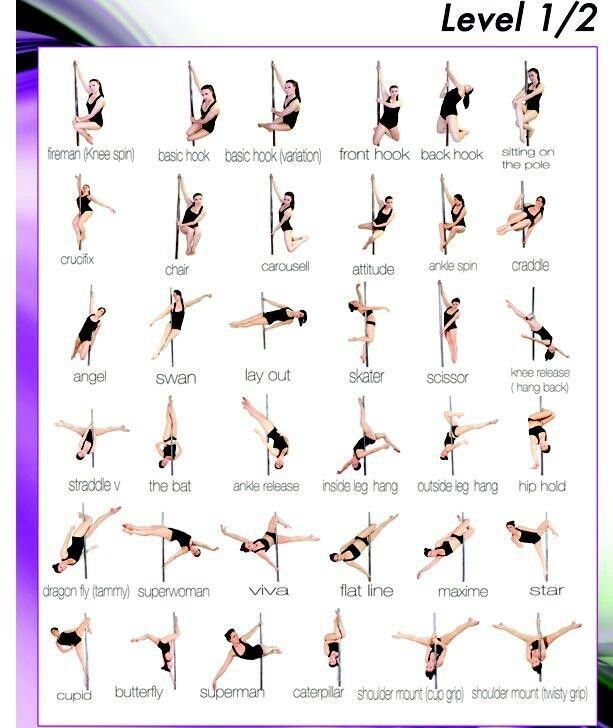
The exotic dance is more about choreography, which is decorated with simple acrobatic elements on a pole. In terms of bales, this is the easiest direction, where it is enough to master only the base.
Artistic dance is the most harmonious, classical combination of elements, ideal for performances. Here we are talking about more complex acrobatic elements and serious physical training.
Professional pylon sport is practically moving away from dancing, which only dilutes the program. For each level of training, mandatory elements are prescribed, the execution technique is evaluated, the emphasis is on strength and trick exercises. When choosing Pole Sport, you need to be prepared for heavy loads and difficult exercises on the pole.
What preparation is needed?
You can learn how to perform tricks on a pole from scratch, that is, without any training at all. The training program is designed in such a way that you work out all the skills directly in the process of training.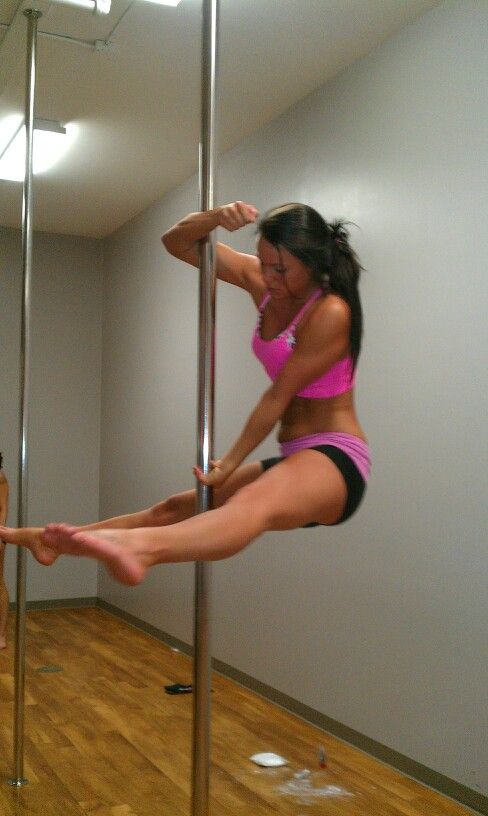
The presence of gymnastic or dance experience, good physical shape, developed muscles and stretching will noticeably facilitate and speed up the preparation process.
As for the preparation for the performance of tricks, each session should include a warm-up for all muscle groups to warm them up and exercises for flexibility. Without this, you cannot go directly to the pylon.
Top 13 Hardest Pole Dance Tricks
Hello everyone, Jetas press service is in touch and we have prepared for you a rating of really hard pole dance tricks. Based on badkitty.com. Many thanks to Silver Bullet for the edits and additions to the article.
13. Chinese phoenix
We all know that the phoenix, that is, the flag with rotation, is a difficult trick. But to make it even more challenging, try a man's grip (also called a Chinese grip). The trick was invented by Nadia Sharif, a static pole spin master. The trick can be divided into 3 parts: 1 - creating a twisting movement on the double upper grip; 2 - exit to the flag on the thrust; 3 - bringing to the fold. From the outside it looks great!
From the outside it looks great!
12. Superball
This is superman, only one level higher: hands (or arm) above the head hold not a pylon, but a leg (or ankle). Requires not only flexible shoulders and back, but also increased resistance to pain.
11. Fold Felix (or Chicken)
The trick was created and named the world famous Felix Cane. To perform, you will need high flexibility of the legs in all directions. It is made from transverse twine. After the performance, the hall will surely give you applause.
10. Bird of Paradise
The trick was created by Marlo Fisken and became popular in 2014. Named after a yoga pose with a similar shoulder position. It can be performed upside down and upside down, while upside down is considered more difficult. Both options require flexible shoulders and good splits.
9.
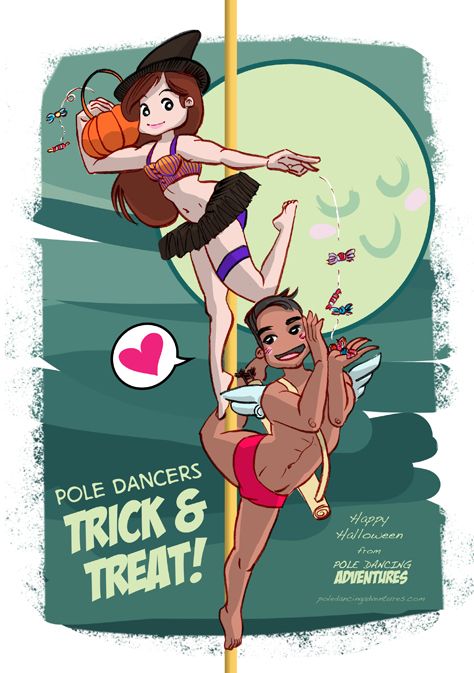 Eagle (or Biellman)
Eagle (or Biellman) Another trick that requires high flexibility of the back and shoulders. The performance on the dynamic pylon looks very beautiful: it looks like an element performed by skaters on ice.
8. Calf Kiss
Designed in 2014 by Marion Crampe. To perform, you will need to unscrew the body relative to the lower leg in order to go into an almost vertical longitudinal split. This twine looks very nice and unusual, but be prepared for a few cute bruises on the calf muscle.
7. Wild Falcon
First introduced by Amy Hazel. The trick is very dangerous and "sick". To perform, you need to have a strong deflection of the back.
6. Fonji
We've seen this trick a thousand times, but that doesn't make it any easier. It will take courage and strength to perform, because it is really difficult and dangerous. But as a reward, you will receive the most valuable thing: enthusiastic applause from the audience.
5. Kamikaze
The same Fonji, only at the end you need to enter the flag with a male grip.
4. Fontzhi 360 (aka bres switch)
The most difficult trick that many of the athletes would not even think of doing. In fact, this is a somersault on a pylon with a change of supporting arm. But you need to understand: what we perceive as a somersault is actually a backover (when one hand holds on to the pole), while in the somersault itself both hands are released.
Here we should add a crazy trick from Roman Masalov. How he does it?
3. Marchenko Rainbow
A well-known element.
